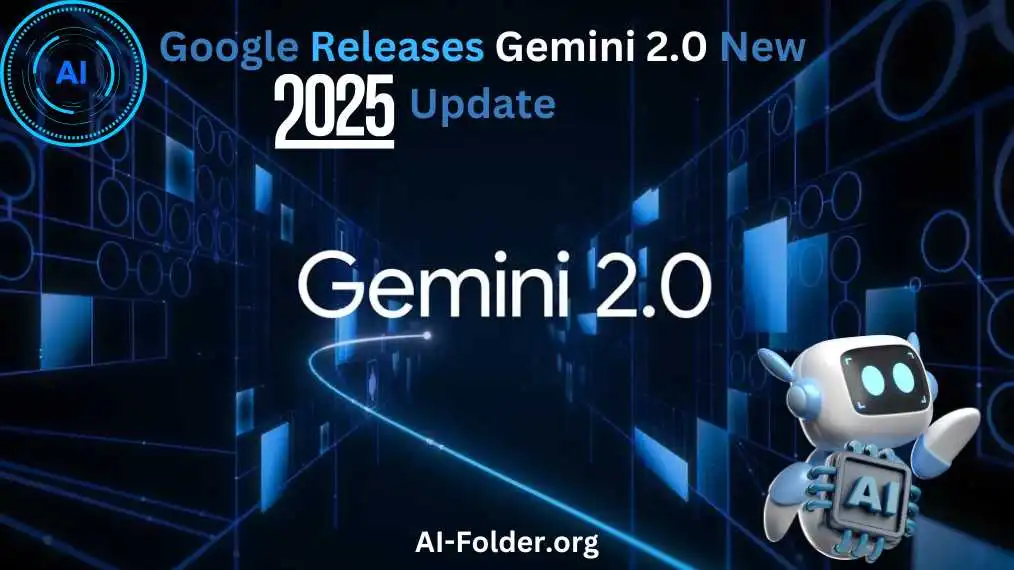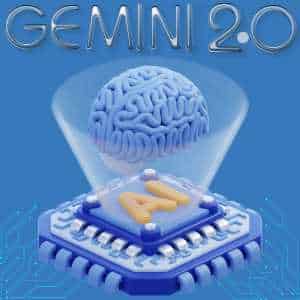Google has officially launched Gemini 2.0, marking a significant advancement in artificial intelligence technology. This new model, introduced on December 11, 2024, is designed to enhance the capabilities of AI systems across various applications, particularly focusing on improving user interactions and functionalities.

Overview of Gemini 2.0
Gemini 2.0 Flash is the first model released under this new family, available globally in a chat format for users and in an experimental multimodal version for developers. This model integrates text-to-speech and image generation capabilities, showcasing Google's commitment to creating a more interactive and versatile AI experience.
Key Features
- Multimodal Capabilities: Gemini 2.0 can process and generate text, images, and audio, allowing for richer interactions and outputs. This includes native image generation and controllable text-to-speech functionalities.
- Enhanced Performance: The new model boasts improved speed and efficiency compared to its predecessors, particularly in code generation and delivering accurate responses to complex queries. It is noted for its low latency and enhanced performance metrics.
- Deep Research Feature: This feature allows Gemini to act as a research assistant, capable of exploring complex topics and compiling detailed reports, enhancing its utility for users seeking in-depth information.
Implications for Users
Google CEO Sundar Pichai emphasized that Gemini 2.0 aims to make information "much more useful," moving beyond mere organization to actionable insights. He described this launch as the beginning of a new "agentic era," where AI can perform tasks autonomously without human intervention.
User Accessibility
The Gemini 2.0 Flash model is currently available for both basic and advanced users, who can access it through the platform on desktop and mobile devices. Developers can also experiment with the model via the this AI tool API on Google AI Studio.
SEO Strategies Moving Forward
- Focus on User Intent: Develop content that addresses the needs and questions of users rather than just targeting specific keywords.
- Leverage Multimodal Outputs: Utilize Gemini's ability to generate images and audio alongside text to create richer content experiences.
- Monitor Changes in SERPs: Stay updated on how this AI influences search engine results pages (SERPs) and adjust strategies accordingly.
How does Gemini 2.0 compare to 1.0 in terms of functionality
2.0 represents a significant upgrade over its predecessor, 1.0, in terms of functionality and performance. Here’s a detailed comparison of the two models based on their key features:
Comparison of Gemini 2.0 and 1.0
1. Speed and Performance
- 2.0: Claims to be twice as fast as Gemini 1.5 Pro, with improved response times and efficiency in processing tasks, including real-time data analysis and complex queries.
- 1.0: While it offered sophisticated reasoning capabilities, it did not match the speed enhancements introduced in Gemini 2.0, particularly in handling real-time interactions.
2. Multimodal Capabilities
- 2.0: Features true multimodal capabilities, allowing it to process and generate text, images, audio, and video seamlessly. This means users can request visual content alongside text or audio outputs directly from the model.
- 1.0: Also had multimodal understanding but was primarily focused on recognizing and comprehending information rather than generating it across different media types.
3. Advanced Functionality
- 2.0: Introduces features like Deep Research, enabling it to act as a research assistant that can explore complex topics and compile reports autonomously. It also supports real-time tool usage, allowing it to execute code and utilize external resources like Google Search effectively.
- 1.0: Focused on organizing and understanding information but lacked the advanced task execution capabilities seen in Gemini 2.0.
4. Contextual Understanding
- 2.0: Enhances contextual awareness significantly, enabling more human-like interactions by remembering past conversations and adapting to user preferences for more nuanced responses.
- Gemini 1.0: Had sophisticated reasoning abilities but was less adept at maintaining context over longer interactions compared to the newer model.
5. Agentic AI Features
- 2.0: Paves the way for agentic AI, which can plan, reason, and make decisions autonomously while still allowing user oversight. This includes creating task lists and completing them independently based on user prompts.
- 1.0: Did not incorporate such autonomous decision-making capabilities; its focus was more on understanding existing information rather than acting on it independently.
6. User Interaction
- 2.0: Designed for enhanced user interaction with features like steerable text-to-speech (TTS) that allows customization of audio outputs based on user needs.
- 1.0: Provided basic interaction capabilities but lacked the advanced customization options introduced in the newer version.
Conclusion
The launch of Gemini 2.0 represents a pivotal moment in AI development, promising to enhance how users interact with technology while reshaping the landscape of digital marketing and SEO practices. As Google continues to integrate these capabilities across its products, businesses will need to adapt quickly to maintain relevance in an increasingly AI-driven world.By focusing on user intent and leveraging advanced features like multimodal outputs, organizations can position themselves effectively in this new era of digital engagement.
Also have a look on Sora new update 2025


